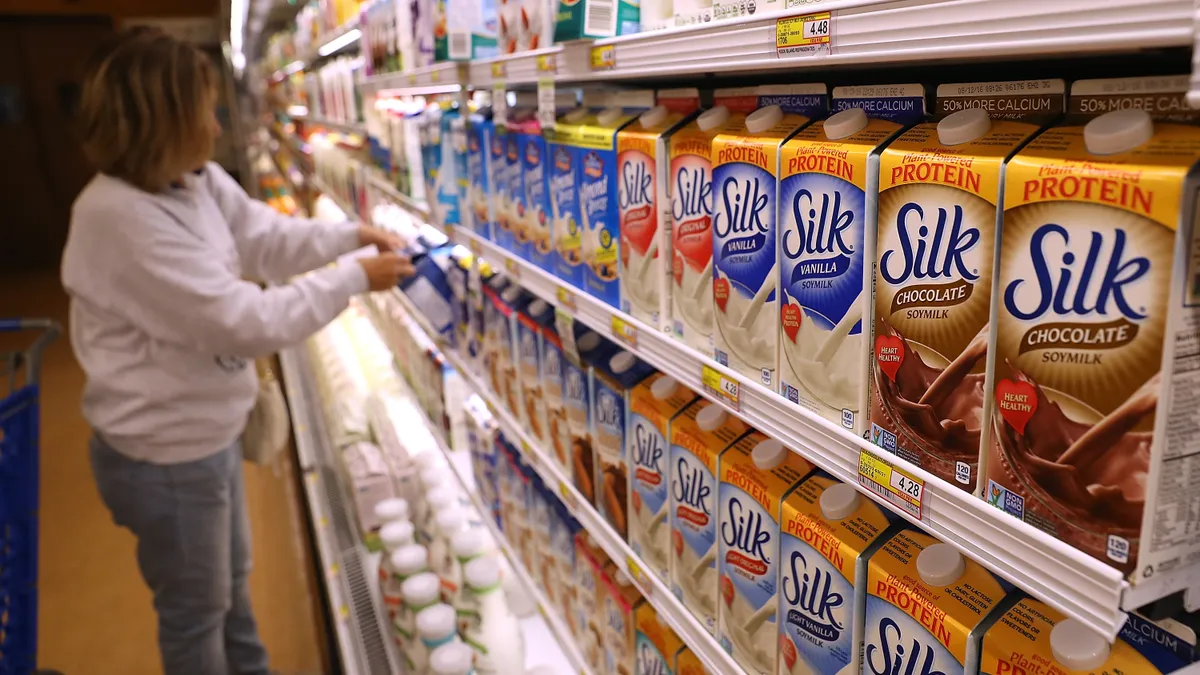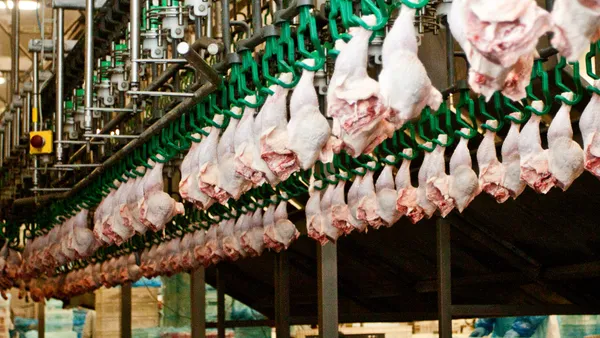After grabbing a bright spotlight early on in the pandemic, food insecurity is once again commanding heightened attention within the grocery industry amid hunger headwinds.
A newly released USDA study found that 12.8% (17 million households) of U.S. households were food insecure in 2022, up from the 10.2% (13.5 million) in 2021 and 10.5% (13.8 million) in 2020. In 2022, 5.1% of households had very low food security — what the USDA said is a “more severe range of food insecurity” — up from 3.8% and 3.9% in 2021 and 2020, respectively.
Just over half of families grappling with food insecurity reported gaining assistance through SNAP, the National School Lunch Program or WIC, per the report.
“[All of those food assistance programs] are currently at risk of reduced funding or restricted access,” Agriculture Secretary Tom Vilsack said in a statement, noting that the uptick in food insecurity also occurred at a time when “significant safety net enhancements” ended, such as expanded Child Tax Credit, universally free school meals and, in a number of states, higher SNAP benefits.
While food insecurity is increasing, federal spending on government assistance programs is impacting the meal budgets of low-income households. Grocery prices have remained stubbornly high even as inflation has slowed.
After spiking earlier in the pandemic, monthly SNAP benefits per person have dropped back down in recent months following the end earlier this year of temporary pandemic-related boosts to SNAP benefits.
Monthly SNAP benefits fell off sharply at the start of this year but remain higher than pre-pandemic
“Despite its many strengths, SNAP benefits are far from adequate, with the average benefit being just $6 per person per day,” the Food Research & Action Center, an organization advocating for hunger relief policies, said following the release of the USDA report.
Research from the University of Missouri’s Food & Agriculture Policy Research Institute forecasts total federal spending on SNAP will decline in fiscal year 2024 to $95 billion, down $17 billion from FY 2023, and that SNAP participation will drop slightly to 41.5 million people. Those participants will receive an average monthly benefit of $180 per person, per the projections.
This week, several national grocery industry players made announcements to provide more support to consumers grappling with food insecurity. Albertsons said it will award $6 million in grants to organizations that are helping to sign people up for SNAP and WIC. Kroger also announced that it is now accepting SNAP benefits for online purchases chainwide.
Instacart this week unveiled a new grocery stipend program for people on the West Side of Chicago. The company also added BJ’s Wholesale Club to its list of retail partners accepting SNAP payments online, making BJ’s the first club retailer to accept SNAP benefits via Instacart.
Going forward, grocers of all sizes may want to consider a targeted approach for tackling food insecurity. Some households, particularly in the South or rural parts of the country, tend to experience higher food insecurity rates than other areas, the USDA report found — an indication of areas that could especially benefit from grocery industry support.












